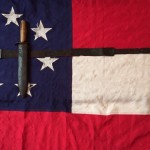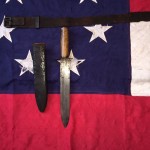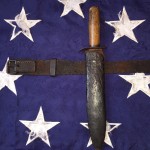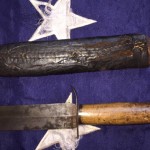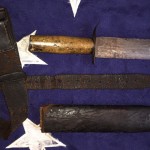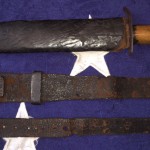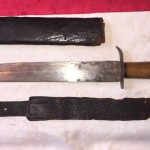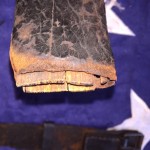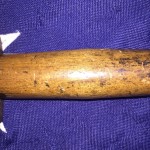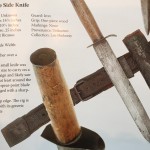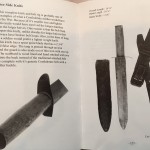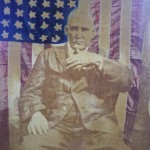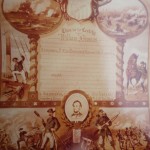-
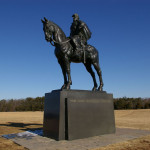
-
Stonewall Jackson Memorial in Manassas Battlefield Park
-
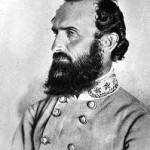
-
Stonewall Jackson
-
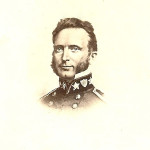
-
Young Stonewall Jackson
Thomas Jonathan “Stonewall” Jackson born January 21, 1824, was a Confederate general during the American Civil War. He graduated 17th of a class of 59 from the U.S. Military Academy at West Point, New York, in time to fight in the Mexican War (1846-48).
Jackson began his United States Army career as a Second Lieutenant in the 1st U.S. Artillery Regiment. He served at the Siege of Veracruz and the battles of Contreras,Chapultece , and Mexico City, eventually earning two brevet promotions, and the regular Army rank of First Lieutenant. It was in Mexico that Thomas Jackson first met Robert E. Lee.
In the spring of 1851, Jackson accepted a newly created teaching position at the Virginia Military Institute (VMI), in Lexington Virginia. He became Professor of Natural and Experimental Philosophy and Instructor of Artillery. Parts of Jackson’s curriculum are still taught at VMI, regarded as timeless military essentials: discipline, mobility, assessing the enemy’s strength and intentions while attempting to conceal your own, and the efficiency of artillery combined with an infantry assault.
After his home state of Virginia seceded from the Union in 1861, Jackson joined the Confederate army and quickly forged his reputation for fearlessness and tenacity during the Shenandoah Valley Campaign.
Jackson served only briefly as a colonel before receiving a promotion to brigadier general under General Joseph E. Johnston. Jackson earned his nickname at the First Battle of Bull Run (also known as Manassas) in July 1861 when he rushed his troops forward to close a gap in the line against a determined Union attack. Upon observing Jackson, one of his fellow generals reportedly said, “Look, men, there is Jackson standing like a stone wall!”–a comment that spawned Jackson’s nickname. Jackson was commissioned a major general in October 1861.
By October 1862, Jackson was a lieutenant general and led a significant portion of Lee’s army. His widely publicized exploits had elevated him to legendary status among Southern soldiers and citizens alike. Jackson’s bravery and success inspired devotion from his soldiers, but to his officers, he was known as overly secretive and difficult to please. He frequently punished his officers for relatively minor violations of military discipline and rarely discussed his plans with them. Rather, they were expected to obey his orders without question.
Lee and Jackson’s most famous victory took place at the Battle of Chancellorsville in Virginia in May 1863. Facing a numerically superior Union force of 130,000 men to 60,000 of their own, Lee and Jackson devised and executed a plan to rout the army of Union General Joseph Hooker.
Historians call this battle one of Lee’s finest moments as a Confederate general, and his success owed much to Jackson’s participation. On May 2, Jackson stealthily and quickly took 28,000 troops on an approximately 15-mile forced march (Jackson’s Flank March) to Hooker’s exposed flank while Lee engaged in diversionary attacks on his front. Jackson’s attack on the Union right inflicted massive casualties on the superior force, and Hooker was forced to withdraw only days later.
But the victory was not without cost. Jackson’s brutal attack ended at sunset, when he took some men into the Wilderness to scout ahead. Troops from the 18th North Carolina regiment mistook them for enemy cavalry and opened fire, shooting Jackson 3 times, twice in the left arm and once in the right hand. Several of his Staff were killed, in addition to many horses. Darkness and confusion prevented Jackson from getting immediate care. He was dropped from the stretcher several times while being evacuated. He was taken from the field and General J. E. B. Stuart took over his command. Dr. Hunter McGuire determined that a bullet had shattered the bone just below his left shoulder, and quickly amputated Jackson’s left arm he was then moved to Thomas Chandlers Plantation.
Jackson appeared to be healing from his wounds, but he died in the plantation office building in Guinea Station, Virginia from pneumonia on May 10, 1863 at the age of 39. Lee dispatched a letter, writing, “Could I have directed events, I would have chosen for the good of the country to be disabled in your stead.” Southerners mourned the death of their war hero, while Lee faced fighting the war without a highly valued general and comrade.
His body was moved to the Governor’s Mansion in Richmond Virginia for the public to mourn, and then he was moved to be buried in the Stonewall Jackson Memorial Cemetery, Lexington, Virginia. However, the arm that was amputated on May 2nd was buried separately by Jackson’s Chaplin at the Horace Lacy House,’’ Ellwood” in the Wilderness near the field hospital.

